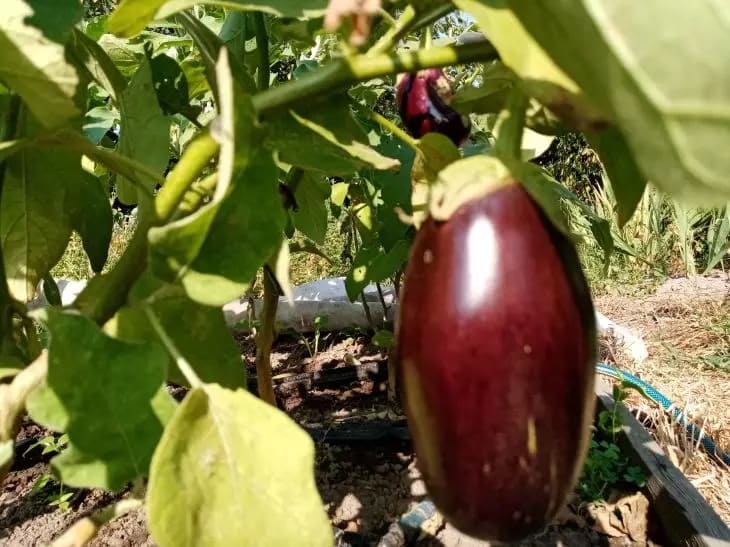Eggplants migrated to northern gardens from India and South Asia, so they are not entirely comfortable in our inhospitable climate. They love warmth, lots of moisture and sunlight.
It is especially important for a southern guest that the roots are kept warm, which is difficult to provide in northern regions.
Even if the air temperature reaches 20 degrees, the soil temperature can remain cold for a long time, especially at the beginning of the season.
Therefore, eggplants are grown mainly in greenhouses. But what about those who do not have such an opportunity? Old gardeners have one secret planting method that will help solve this problem.
How to get a rich harvest of eggplants in open ground
Growing eggplants without a greenhouse is like playing roulette. It depends on your luck. If the year is favorable, the southern guest will shower you with fruits without any attempts to deceive the climate. But if not, you will have to help the plant survive the weather adversity with your own hands.

The most important thing for heat-loving plants is warm soil. If the soil temperature is below 15 degrees, eggplants stop growing, do not set fruit, and shed existing ovaries. 13 degrees of heat for this crop is about the same as 0 degrees for other plants.
But gardeners have come up with a clever planting method that allows them to raise the soil temperature in May and the first half of summer, as well as provide the plant with additional nutrition.
You need to dig a deep planting hole, put green grass in it in a layer of 7-10 cm, lightly sprinkle with earth. Pour a layer of earth of at least 7 cm on top of the grass layer. And plant the eggplant on top.
The green grass will start to "burn" very quickly, warming the planting hole from below. The eggplant will feel comfortable even in cool weather, as the root system actively develops in the warmth and absorbs nutrients.
During the burning process, the grass will begin to release nitrogen, which will serve as a natural fertilizer for the plant at the initial stage of development, when the seedling needs nitrogen most of all. It is important to remember that with such planting, nitrogen fertilizers will have to be reduced, or even eliminated, to prevent the bush from becoming fat. Observe the plant. If it is not noticeable that it is experiencing nitrogen starvation (pale leaves, growth inhibition), there is no need to additionally feed it with nitrogen. If there are signs, it is better to feed it on the leaf.
When planting in this way, it is important to understand that the grass heats up a lot, so you should not lay too thick a layer, otherwise the plant will also “burn”. For the same reason, the layer of soil between the greenery and the root system should be at least 7 cm, so that the roots do not get burned.








